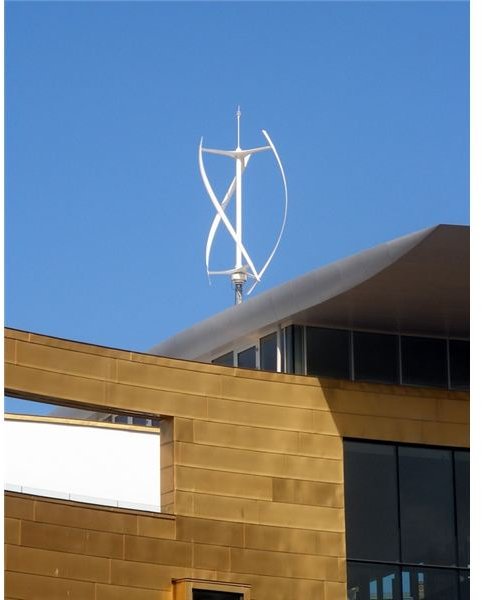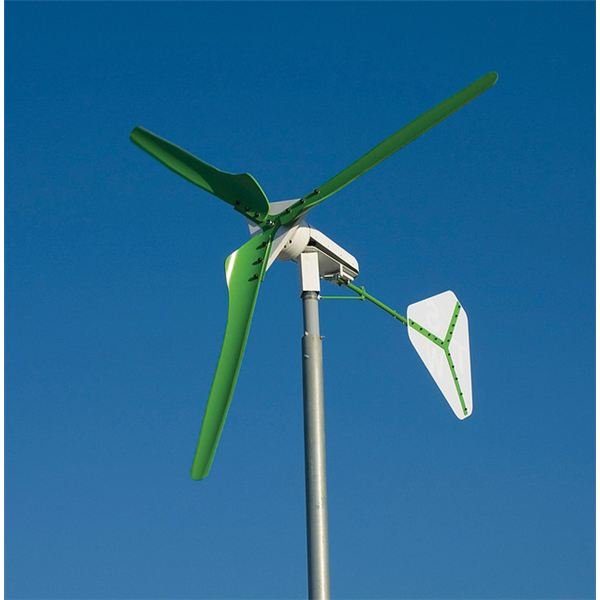Using Horizontal Wind Turbines for Green Energy in Your Home
Wind Power for Your Home
If you are interested in a more sustainable lifestyle, you may be considering producing some or all of your home’s energy needs with a wind turbine. But, which is better, vertical or horizontal wind turbines?
How Does a Wind Turbine Work?
Wind turbines, both horizontal and vertical, work by capturing the kinetic energy of the wind and transforming it into electricity. When the wind turns the turbine, it, in turn, spins a rotor that is attached to a generator that produces electricity. Where horizontal and vertical wind turbines differ is in the shape of the turbine.
A horizontal wind turbine is most commonly a two or three blade windmill like the one at the left. It is referred to as a horizontal turbine because the axis of the hub is horizontal.
A vertical wind turbine’s hub is on a vertical axis. Vertical turbines come in two models. The first, the Savonious rotor, has two cups that are pushed by the wind. This is a highly inefficient model, and is rarely used. The second, more common vertical turbine is the Darrierus model, which has c-shaped blades that look like an egg beater.
Is Horizontal Better Than Vertical?

Horizontal wind turbines have a higher efficiency rating than vertical turbines. In general, a horizontal turbine is 35% efficient, while a vertical one is 30% efficient. Over a lifetime, a horizontal turbine will generate significantly more power than a vertical turbine. Part of the reason for this is that a horizontal turbine will turn so that it is always going into the wind, while a vertical turbine is always perpendicular to the wind, which means that it takes less advantage of air flow.
Horizontal turbines are also more structurally sound than vertical turbines. The greatest amount of stress on a wind turbine during operation is on its hub. A horizontal turbine’s hub is at the center of the blades, which makes it more stable than a vertical turbine, which is attached by the base.
One advantage of vertical wind turbines is that they do not need to be mounted on a tower like a horizontal wind turbine does. However, wind power experts warn that the wind at ground level is not as constant as wind up above impediments like trees and buildings. As a result, you will not get as much power from a vertical turbine at ground level.
One surprising area that vertical turbines may have an edge is in aesthetics. There is research that indicates that people find vertical turbines more visually pleasing. This is because of what is known as the frequency effect. The motion of a vertical wind turbine is mesmerizing in the same way as waves on the beach or a campfire. Horizontal wind turbines have a tail that makes them move back and forth, and so do not have the same sort of visual appeal as vertical turbines. One complaint that is often raised about wind power is that turbines are unsightly. Seeing a vertical turbine in motion may quell some of the neighbors’ concerns.
In general, horizontal turbines seem to be a better choice for most situations, but, you need to consider your household’s individual situation and needs before making a choice when it comes to wind power for your home.
Resources
Mother Earth News: https://www.motherearthnews.com/Renewable-Energy/2008-02-01/Wind-Power-Horizontal-and-Vertical-Axis-Wind-Turbines.aspx
The Danish Wind Industry Association: https://guidedtour.windpower.org/en/tour/design/horver.htm
Photo Credits:
